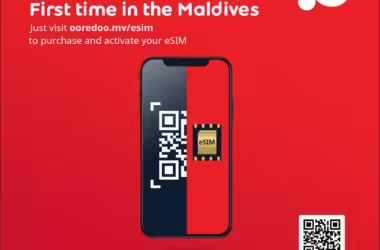The Maldives flag is a deeply revered national symbol that embodies the country’s heritage, independence, and devotion to Islam. Despite its simple appearance, each color and design element holds strong meaning rooted in the Maldives’ rich history and cultural identity. The flag not only flies high on government buildings and international platforms but also lives in the hearts of the Maldivian people.
This comprehensive guide explains the design, symbolism, history, protocol, and international importance of the national flag of the Maldives. If you’re a traveler, student, or simply curious about world flags, this article will give you everything you need to understand what makes the Maldives flag so unique and special.
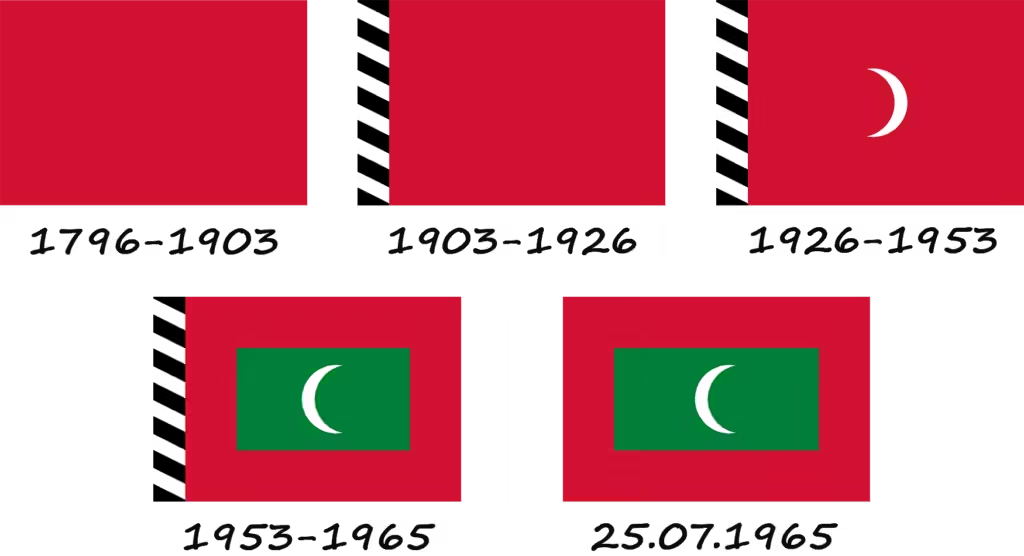
1. Description of the Flag
The Maldives flag features a clean, rectangular design. At first glance, it consists of three major components:
- A solid red field that forms the flag’s outer background.
- A green rectangle placed centrally within the red field.
- white color crescent moon in the middle of the green color rectangle, with the horns facing toward the fly side.
This distinctive layout allows the Maldives flag to stand out visually while carrying layers of symbolic significance.
Dimensions and Specifications
The government approved proportions of the Maldives flag are 2:3, meaning the height is two-thirds of the width. The green rectangle is slightly inset from all four sides of the red background, providing visual balance.
Color Breakdown:
- Red – HEX: #D21034 – Represent courage and sacrifice.
- Green – HEX: #007847 – Representpeace and natural wealth.
- White – Standard white (#FFFFFF) – Represent purity and Islamic values.
Legal Recognition
The Maldives flag was officially adopted on July 25, 1965, one day before the Maldives gained full independence from the British. It is enshrined in the country’s laws and protected by flag protocols issued by the Maldivian government.
2. Meaning and Symbolism of the Maldives Flag
While the Maldives flag may appear minimalist, it carries deep symbolic weight that reflects national ideals, sacrifices, and spiritual beliefs.
Red Field: A Tribute to Martyrs
The bold red border symbolizes the bravery of Maldivian heroes who sacrificed their lives to protect the nation from foreign domination, particularly during the colonial era. It is a reminder of past struggles and the resilience of the people who fought for the country’s independence and sovereignty.
Green Rectangle: A Symbol of Prosperity and Peace
The green color rectangle on the Maldives flag symbolizes prosperity, peace, growth, and forward movement. It also mirrors the country’s lush tropical vegetation and iconic palm trees, highlighting the Maldives’ deep-rooted connection to nature. Moreover, the color green holds strong significance in Islam, representing the country’s unwavering religious foundation and the role of faith in everyday Maldivian life.
White Crescent Moon: The Core of Maldivian Identity
The crescent moon on the Maldives Flag, a universal Islamic symbol, represents Islam, the Maldives’ official and only religion. Islam is deeply embedded in every aspect of Maldivian life — from governance and law to daily rituals and national celebrations. The right-facing orientation of the crescent moon signifies forward movement, progress, and unity under divine guidance.
Together, these elements form a narrative that celebrates Maldivian independence, Islamic faith, and a harmonious relationship with nature.
3. Historical Evolution of the Maldives Flag
The history of the Maldives flag mirrors the political and social changes the country has experienced over the centuries. From the early days of the sultanate to modern republic-hood, the flag has undergone several transformations.

Pre-20th Century: Red Banners of the Sultanate
Before the introduction of formal flags, Maldivian rulers used plain red banners as royal or maritime symbols. Those red flags were believed to represent power, courage, and protection. At sea, red banners often identified the sultan’s naval vessels.
There is limited documentation about early flags, but red was a common color in South Asian sultanates, likely influenced by Islamic and local traditions.

1926: Introduction of the Green Rectangle and Crescent
In 1926, during the British protectorate era under Sultan Muhammad Shamsuddeen III, the Maldives adopted a flag design that included:
- A green rectangle added to the red field
- A white crescent moon inside the green field
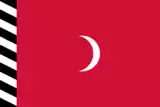
1953: Republic and Emblem Experiment
When the Maldives changed to a republic in 1953, the flag was changed again to include the state emblem, having crossed coconut palm fronds, a crescent, and traditional Maldivian tools.
This version was short-lived, lasting only a few months before the monarchy was restored. However, it signaled growing national consciousness and the desire for self-rule.
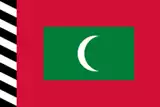
1965: Independence and Final Flag Design
The modern Maldives flag was officially adopted on July 25, 1965, as a representation of full independence from British rule. The emblem was removed, leaving the current design:
- Red field
- Central green rectangle
- White crescent moon
This version has remained unchanged for nearly 60 years and is now one of the most recognizable Islamic national flags in the world.
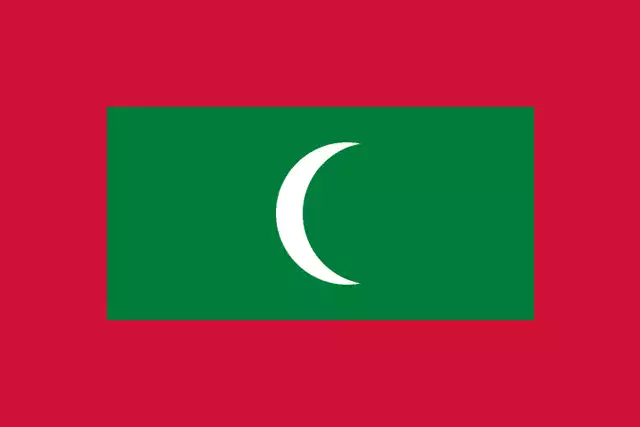
4. Protocol and Usage of the Maldives Flag
The Maldives treats its national flag with the utmost respect, adhering to strict flag protocols and etiquette.
Official Flag Display
The Maldives flag is flown daily at:
- The President’s Office and government ministries
- Parliament buildings
- Schools, courthouses, and police stations
- International airports and border control posts
- Embassies and diplomatic missions abroad
It is also hoisted during national holidays like:
- Independence Day – July 26
- Republic Day – November 11
- Victory Day – November 3
Flag Etiquette
The flag is subject to a set of official rules:
- Must be hoisted before sunrise and lowered after sunset, unless illuminated at night.
- Cannot be used as clothing, accessories, or marketing materials.
- Should never be kept on the ground or floor, water, or any object beneath it.
- Must be clean, untorn, and properly displayed.
- Flown at half-mast only during national mourning or tragedy.
Violation of flag protocols is taken seriously and considered a sign of disrespect to the nation.
5. Variations and Related Maldives Flags
While the national flag is uniform, the Maldives has variations used for different state functions.
Presidential Flag
The Presidential Standard includes:
- The national flag in the background
- The state emblem — a coconut palm flanked by national flags, a white crescent, and a scroll inscribed with the Arabic name of the Maldives
This flag is displayed:
- At the official residence of the President
- On presidential vehicles
- During state ceremonies
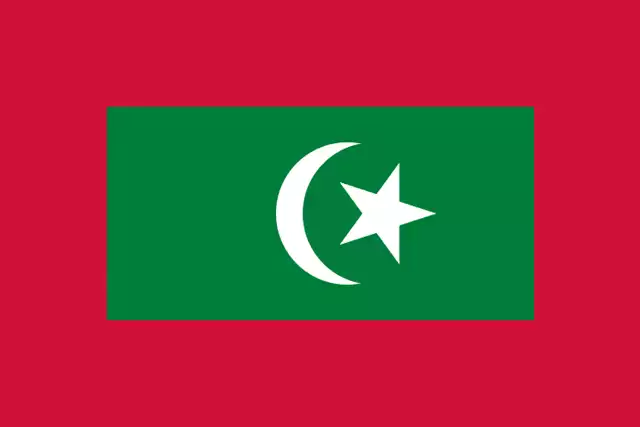
Military and Government Flags
- The Maldives National Defence Force (MNDF) uses unique flags for its army, navy, and special units.
- These flags often feature symbols like anchors, swords, or stars along with the national colors.
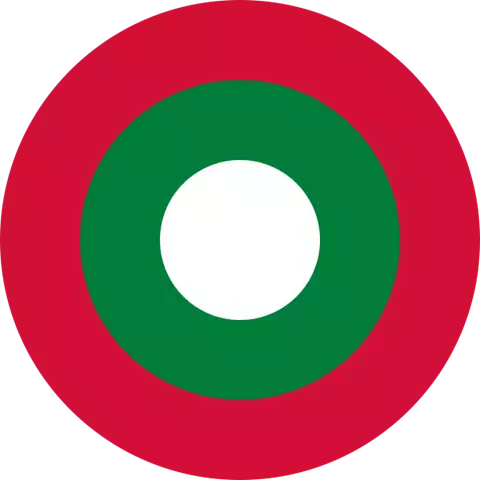
Naval Ensign
- The naval ensign includes a blue background with the national flag in the upper-left canton and may include additional stripes or icons.
These adaptations help identify ranks, functions, and branches of government while preserving national symbolism.
6. The Maldives Flag in International Context
The Maldives flag plays an important role in representing the country abroad and establishing its presence on the global stage.
Display in International Institutions
- United Nations: The Maldives flag has flown at the UN Headquarters in New York City since the Maldives aquired UN membership in 1965.
- SAARC: As a founding member, the Maldives flag is represented at all South Asian Association for Regional Cooperation events.
- Olympic Games: The Maldives flag is carried by athletes during the opening ceremony and displayed in national team kits.
- International Summits: It appears at climate change conferences, trade forums, and global diplomatic meetings.
Embassies and Consulates
All Maldivian embassies and consulates worldwide fly the flag above their entrances, symbolizing national sovereignty, especially in host countries.
In each of these contexts, the flag acts as a bridge between the Maldives and the rest of the world, helping promote national interests and cultural diplomacy.
7. Fun Facts and Trivia About the Maldives Flag
Here are some fascinating and lesser-known facts about the Maldives flag:
- It is one of the few national flags to feature a crescent moon without a star, making it visually distinct among Islamic nations.
- Green is not only symbolic of Islam but also reflects the Maldives’ commitment to environmental conservationand eco-tourism.
- The Maldives flag has never incorporated colonial elements, such as the Union Jack, despite being a British protectorate — a unique case among former colonies.
- The flag is often included in educational materials, such as textbooks and student uniforms, to build national pride from a young age.
8. Conclusion
The Maldives flag is a strong national symbol, gracefully blending faith, culture, and history. From its red background of sacrifice to its green symbol of peace and its white crescent of religious devotion, the flag tells the story of a nation rooted in resilience and unity.
As the Maldives navigates the challenges of the 21st century — from environmental threats to tourism growth — the flag continues to represent the unbreakable spirit of its people and their commitment to progress guided by tradition.
Whether you’re visiting the Maldives, studying vexillology, or simply expanding your global knowledge, understanding the Maldives national flag offers meaningful insight into this island paradise.
9. Frequently Asked Questions (FAQs)
What are the color representation of Maldives Flag?
- Red symbolizes national heroes who died protecting the country.
- Green reflects peace, prosperity, and the Islamic faith.
- White crescent signifies Islam, unity, and spiritual guidance.
When was the Maldives flag adopted?
- The modern Maldives flag was officially adopted on July 25, 1965, just before the Maldives became fully independent from British rule.
The crescent moon on the Maldives flag mean what?
- It symbolizes Islam, the country’s official religion, and reflects the importance of religion in national life.
Are there different versions of the Maldives flag?
- Yes. The Presidential flag, military flags, and naval ensigns are customized variations used for specific state functions.
Can the Maldives flag be used in commercial logos?
- No. The use of the flag in commercial branding or merchandise is prohibited by law to protect its dignity.


